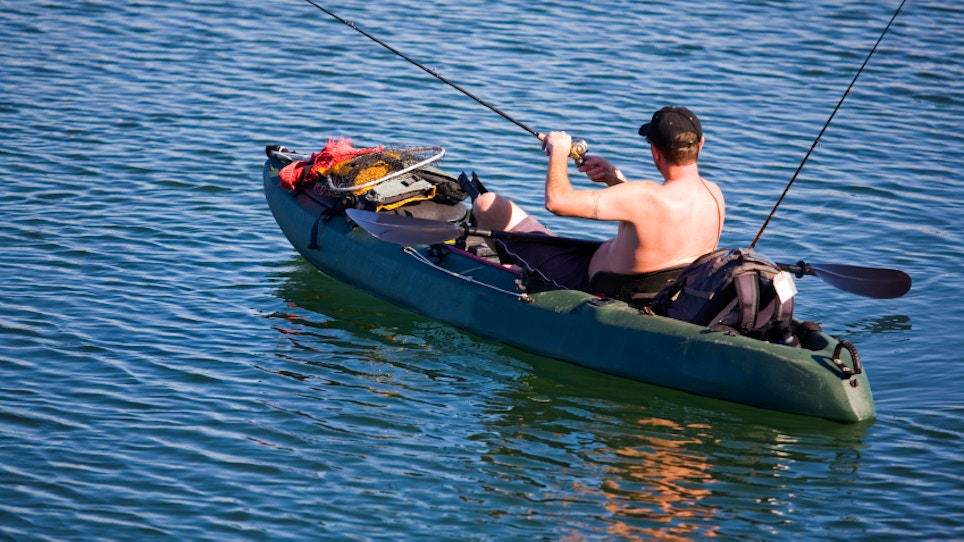By BRIAN BROOM | The Clarion-Ledger
JACKSON, Miss. (AP) — Fishing from kayaks has grown by leaps and bounds, and the sport seems to become more mainstream every day. It's so popular, last year's Ride the Bull Kayak Fishing Tournament in south Louisiana attracted 732 anglers.
Newer designs are more stable than their predecessors and built with fishing in mind. Those are certainly reasons more people are using them, but even though many are built specifically for angling, they aren't without limitations.
To overcome those challenges, some of Mississippi's top kayak fishermen offered some tips to make fishing more successful, fun and safe.
Bass boats that run more than 70 mph give fishermen the ability to cover a lot of water quickly, but kayakers don't have that option. That means working the water you have and working it hard.
“I can't cover 20 times the water that a big boat can,'' Dwayne Walley of Madison said. “I've got to cover the water 20 times more thoroughly.
“When I'm fishing water like in the pads, I'm going to keep three rods between my legs where I can grab them. I'll have different kinds of baits.''
Walley said he fishes an area with one bait, then picks it apart again using a different type of lure, color or retrieve.
“We have to maximize the water we fish,'' Walley said. “You fish it and fish it until you determine there's nothing there. You just have to change it up and hope they pick it up.''
Once a fish that picks up a bait gets hooked, Walley said beginning kayak anglers sometimes create a bigger fight trying to get it in the boat.
“I see people reel in a fish too tight, too close to the rod,'' Walley said. “As you're reeling him in, you've got to give him enough slack to get him in the boat.''
Much like crappie fishermen boat a fish with a jig pole, Walley said he leaves enough line out to bring it to the boat by raising his rod tip and get the fish.
“I stick the rod under my arm right in front of the reel,'' Walley said. “That frees up both my hands so I can grab the fish.''
Fishing boats these days have seemingly endless storage, and anglers can carry enough baits to open up a tackle shop. Kayakers, on the other hand, have to make choices.
“You just have to decide, `How am I going to fish today,'' Walley said. “What baits am I going to use?''
Fishing kayaks generally have an area behind the seat to secure a storage box or milk crate and that is about the extent of space for tackle. Some can be stored elsewhere, but getting to it while on the water could be a problem.
Walley uses the YakAttack BlackPak box that comes with rod holders mounted to it and is pre-drilled for more holders and accessory rails. For the do-it-yourself crowd, Walley said a milk crate outfitted with PVC pipe rod holders will work fine. But either way, that's about the limit for tackle space.
“You choose your weapons wisely,'' Walley said. “You can't carry the whole house.''
Matthew Lofton of Hattiesburg has many years of paddling behind him, and in that time he's only had two spills. Even so, Lofton said he protects his gear.
On loose items that will sink, Lofton said he adds floatation to them.
“The foam noodles, like a pool noodle, they cost about a dollar,'' Lofton said. “I like to cut them into sections.''
Lofton takes the sections and ties them to pliers, fish grippers and other small items. Rods, bags and boxes and other larger items that don't float are attached to the kayak with leashes.
“Everything is attached to the kayak or has a float on it,'' Lofton said. “You don't want to replace a rod or something if you flip.''
Securing your gear in case you capsize is simply a matter of tying things down and making sure others float. But what about getting back in the kayak?
Veteran kayak racer Michelle Blair of Brandon said it's a matter of knowing how in advance.
“Re-entry is one of those tricky things,'' Blair said. “It's something everyone should practice in a pool, in a sandy, beachy area or some other controlled environment.''
To see various techniques, you don't have to look any farther than the internet. “You can YouTube videos all day long,' Blair said.
Her most basic tip is also the most important. Wear a life vest.
“I'm a good swimmer, but if you fall out, hit yourself in the head and get knocked out, you're going to drown,'' Blair said. “If you get a charley horse, you're going to drown.
“It's an essential piece of gear that everyone should have and use. Find something that is comfortable.''
___
Information from: The Clarion-Ledger, http://www.clarionledger.com






